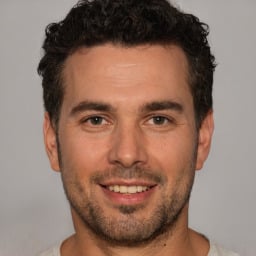Introduction of Human Resource Development program
Organizational learning can be said to be derived from individual learning. The learning process in an organization starts when shared work practices are preserved, upgraded and changed in order to deal with a changing situation or a problem arising at the workplace. It is via learning of the individual members that organizations learn and hence, it is very important to have an appropriate individual learning in order to enable a proper organizational learning. It has been repeatedly stated by researchers that learning is a continuous process and this concept applies to human resource development as well where personal and professional development can never be said to have been complete as there is always room for improvement (“Organizational Learning in Schools, School Systems, and Higher Education Institutions").
Through this paper, I would like to demonstrate how adult learning theories and organizational learning theories can be practically applied which can lead to an evolution of both individuals and organizations as per my leanings from an HR intervention that I happen to attend. This is practically important for an organization like dance school which would help in its continuous improvement. It will help to provide a new insight for dealing with prevailing issues and help in overall learning . The HR intervention will assist to focus on whether the theories have been practically implied or not and what changes may be required to help in overall development of school
Articulation of the context
The intervention has occurred in context of dance school where there is a need to have an understanding about individual as well as organizational learning so as to reap positive benefits not only for the dance school but also to inculcate increased adaption of requisite skills among students. The human resource intervention attended by me was about the theories and models that give information related to adult and organizational learning. The practical idea that the HR intervention gave me will help me in bringing about a transformational learning in the school which will be beneficial for the school as well as for individual members. The practical application of models and theories will be of assistance in encompassing the force of constant learning which is a key driver to remain flexible and adaptable to the changing formats of dancing.
Link with HRD literature
As a teacher of dance school various problems are faced while teaching the techniques of dancing to students. These include lack of coordination, time management, presence of conflicts regarding front positions etc (Gibbons 134). The mentioned issues generally show their effects when dancing activity are being performed in groups. The HR intervention gave me an idea that the adult and organizational learning theories focus upon the power relation that exist between the learner and the learning environment. A very important point that was highlighted was that in terms of learning environment, the position of an individual is that of a constructor of knowledge.
Other major problem that was identified was quite alarming was that the students have a tendency to question the knowledge, authority and position of the teacher. Thus, having a complete understanding as well as application of models, theories and practices related to organizational learning can provide a room for further improvement which is a requisite for any physical activity including dancing . The practical application of the various models of adult and organizational learning theories that I learned at the HR intervention will help me in reducing this particular attitude as it was clearly highlighted that a teacher or an instructor should never project ignorance before the students. I had the attitude of being open with the students and clearly stated if I did not have knowledge on a particular area. Although, this would not develop an attitude of inquiry among the students but at this stage it is very necessary to create a safe environment for the teacher or the trainer and thus, it will be very helpful for me in solving the problems that are occurring in my dance school.
Another problem that was very prevalent in my dance school was that there were problems arising due to gender difference, power difference and diverse viewpoints. Thus, I learned from the intervention that how will I be able to create an inclusive environment at the workplace. It was one of my major learning’s at the intervention, which helped me in understanding that to solve this particular problem I need to shift my role from that of an expert to that of a consultant. I can solve this dispute by assigning certain roles to the participants within the group which will transform the difference and diversity within the group to collaboration as each individual will accomplish his or her own tasks and each member will learn from another member of the group.
There are four elements present in organizational learning that inculcates the concept of supportive leaders, continuous improvements, intuitive knowledge processes and defining learning structure . In present case to handle conflicting situations that occur among the dance troops there is a requirement to make leaders. The main aim of any dance group is to achieve synchronization of steps between the dancers. Hence, here a leader can be selected among the dancers that will focus on coordination of activities that is a part of the given act. It is also essential to bring continuous improvements to avoid conflicting situations. But it should also be kept in mind that the role of a leader is not merely to lead. I learned at the HR intervention that it is very important to ensure that each and every member of the group is learning and is not merely present.
It is not easy to deal with beginner dancers but the same problem with respect to lack of creativity can appear in expert dancers as well. In such a case there can be application of learning on demand model given by Reuben Tozman. I realized that in order to bring about creativity in my students I need to conduct memory refreshment for them from time to time. Till now I was more concerned about dancing and never focused on additional training needs that may arise but are never discussed in the dance school. The training sessions that were conducted till now were not focused for particular areas and were conducted randomly which was not very beneficial for the students. Thus, the HR intervention helped me to assess the importance of training and how providing training at the right time and in relation to a particular skill area can enhance learning and further polish the skills and knowledge of the students at the dance school. Hence, this model will help me in assessing the areas where performance is lacking with respect to dancing. It will thus help the present dance school to bring in new methods of training and development for expert dancers as well .
In order to deal with issues faced by dance school members and to ensure a complete development of organizational as well as individual learning, there is a need to evaluate the learning process model in context of dance school. This approach is meant to achieve a significant improvement in the overall business process which is dancing in present context. The model is based on various concepts which can be successfully applied in relation to achieving learning in dance school.
In present situation the first concept of systematic approach to learning can be applied easily. This notion focuses on individual learning for achieving a full contribution towards attainment of aims of organization which is to ensure that there is a constant evolution in the techniques and methods to impart dancing skills with respect to students. As per my understanding from the practical knowledge that I gained from the event it is quite clear that constant innovation in the learning styles is very necessary to maintain the interest levels in the profession that an individual is pursuing. It thus focuses on the overall commitment of dance school to foster individual learning among students in the best possible manner in order to make them stand out of the masses. This is supported by provision of constant training to make the dancers familiar with different styles of dancing so that they can achieve perfection on an individual as well as group level (“Organizational Learning in Schools, School Systems, and Higher Education Institutions”).
The second concept is related to leadership which is considered as a key for success of any given venture. At present, I as a dance teacher did not follow the process of taking feedbacks and opinions from the students but an assessment of various problems brought forth the idea that following the participative leadership style will be beneficial for individuals as well as organizations. It will also aid in the reduction of conflicts among members. This will help in selection of a leader that can recognize the presence of conflicts and suggest steps to improve them by achieving a two way communication among members . Leader here needs to play a part of role model in order to enhance the process of effectiveness in any dance performance.
The third concept pertains with team learning development which is considered as a feature of reengineering in business process. When I explored the situation at the dance school, I realized that it is very important for dancers to work in groups and support each other so that problems like lack of coordination and synchronization will be solved to a great extent. This process will help in bringing about the required changes at the dance school . This issue according to the given model asks for facilitating role on part of leaders and greater responsibility among team members to ensure increased synchronization of steps. I now strive to take group learning and team building activities to further solve this problem.
Next is the evaluation and application of individual learning support based on learning process model. This leads to application of supporting individual learning to dancers by providing mentoring and assisting them with self managed learning. It will also lay emphasis on removal of barriers related to shyness while dancing, balance on the lines, lack of energy, problems in step grasping etc . This approach of individual learning will provide for allowing the newbie dancers to maintain good levels of freedom and joy while dancing. This will help to align the individual goals with that of dance school which is to create perfect dancers who have the potential to stand out of the crowd.
The given model also requires critical evaluation of concepts related to experimentation opportunities and learning resource information systems. This requires for experimentation by team members along with use of computer based training to enhance the process of organizational and adult learning. The same applies in the dance school as well. The concept of dancing is all about creative experimentation to identify opportunities for overall development of new techniques in individual and team dancing.
Conclusion
Thus the overall topic gave me an idea that my position is of a dominant order which should not be confused with oppressive ideology. Before attending the intervention, it was getting difficult for me to manage the unequal power relations that existed between the students but learning the practical implication of the theories at the HR intervention further clarified my role as a trainer and a teacher as to how to confront the unequal power relations (Lyiles and Smith 132). I learnt that in my dance school, I should make clarifications between the position of the teacher and the constantly changing identities of the participants so that the students are not only able to form a voice but also side by side respect the decisions that are taken by the instructor.
I learned from the HR intervention that every person in his or her respective profession moves in a learning curve and hence, training and development sessions are very important for individual learners. I had never focused on factors such as motivation and confidence but the HR intervention guided me in this regard when I realized that I as a dance teacher must focus on this aspect as well. I had always been facing the problem of stagnation of the performance of dancers where I could not see any growth in them as individual dancers (“What is organizational learning”). But the theories and models of adult and organizational learning has been very helpful in this respect and I also realized that this is a very important area of my field which was long been overlooked by me.
I learned that one of my most important tasks as a trainer is to identify such leaders in my students who can engage everybody in the situation. I realized that it might happen that the less dominant members among my students might have very good dancing skills and might be well versed in certain other areas but is not recognized as they do not participate much in certain activities that take place at the dance school apart from dancing.
References
- Antonacopoulou, P. Elena. “The Relationship between Individual and Organizational Learning: New Evidence from Managerial Learning Practices”. Management Learning.
- Eickmann, P., Kolb, A., and Kolb, D. A. “Designing Learning”. Managing as designing.
- Gibbons, Elizabeth. Teaching Dance: The Spectrum of Styles. Author House. 2007. Print.
- Kolb, A. Y. and Kolb, D. A. “Learning Styles and Learning Spaces: Enhancing Experiential Learning in Higher Education”. Academy of Management Learning & Education. 4.2 (2005): 193-212.
- Kozlowski, W. J. Steve, Bell, S. Bradford. “Team Learning, Development, and Adaptation”. Work group learning. 2008: 15-44.
For More - Retail Purchasing and Supply Management

























